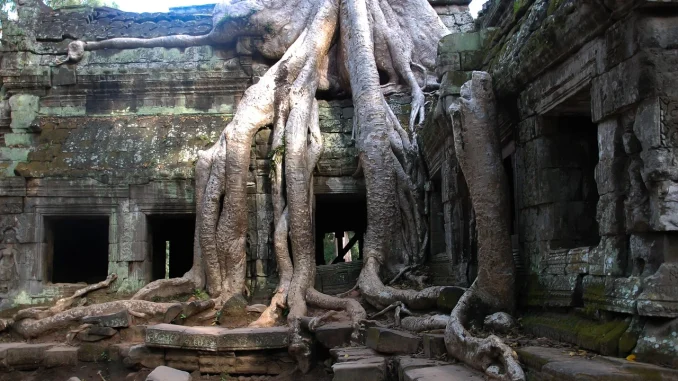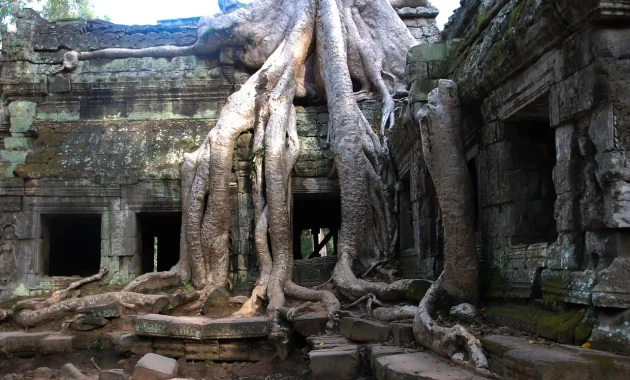
The temples of Angkor Wat are among the most breathtaking and historically significant architectural achievements in the world. Nestled in the heart of Cambodia, near the town of Siem Reap, these ancient wonders draw travelers from all corners of the globe to explore their intricate carvings, towering spires, and deeply spiritual significance. The sheer scale and beauty of Angkor Wat, combined with the rich history of the Khmer Empire, make it a must-visit destination for history buffs, adventurers, and spiritual seekers alike.
A Glimpse into the History of Angkor Wat
Angkor Wat, constructed in the early 12th century, stands as the largest religious monument in the world. Originally built as a Hindu temple dedicated to the god Vishnu, it later transformed into a Buddhist temple as Cambodia’s religious landscape evolved. The temple complex is a testament to the architectural prowess of the Khmer Empire, which dominated much of Southeast Asia during its height.
The name “Angkor Wat” translates to “City of Temples,” and indeed, it was designed to reflect the grandeur and might of the Khmer Empire. Its layout mimics the structure of the universe, with the central tower representing Mount Meru, the center of the universe in Hindu cosmology. Surrounding the temple are wide moats, galleries, and smaller towers, symbolizing the oceans and mountains.
Must-See Temples Within the Angkor Wat Complex
Though Angkor Wat itself is the crown jewel, the Angkor Archaeological Park is home to dozens of other awe-inspiring temples. Each one offers its own unique charm and architectural style, providing visitors with a comprehensive understanding of ancient Khmer culture.
1. Bayon Temple: The Faces of Jayavarman VII
One of the most iconic sites in Angkor is Bayon Temple, located in the center of Angkor Thom, the last capital of the Khmer Empire. Built in the late 12th century by King Jayavarman VII, Bayon is famous for the enigmatic stone faces that adorn its towers. These 216 serene faces, believed to represent either the king himself or the Buddhist deity Avalokiteshvara, are one of the most photographed sites in Angkor.
The intricate bas-reliefs along the temple walls depict scenes from daily life in the Khmer Empire, as well as historical events such as battles and religious ceremonies. The artistry and craftsmanship of Bayon’s carvings make it a standout among the temples of Angkor.
2. Ta Prohm: The Jungle Temple
Unlike many other temples in Angkor, Ta Prohm has been left in much the same condition as it was when rediscovered in the 19th century. Giant trees with massive roots engulf the temple’s stone structures, creating a dramatic fusion of nature and architecture. This “jungle temple” has become famous for its atmospheric appearance and was featured in the film Tomb Raider.

Ta Prohm was built as a Buddhist monastery by Jayavarman VII and was dedicated to his mother. Its layout is vast and labyrinthine, with courtyards, galleries, and towers intertwined with the encroaching jungle. The experience of wandering through Ta Prohm feels like stepping back in time to a forgotten world.
3. Banteay Srei: The Jewel of Khmer Art
Banteay Srei, located about 25 kilometers from the main Angkor complex, is a small but exceptionally beautiful temple. Known as the “Citadel of Women,” it was built in the 10th century and is dedicated to the Hindu god Shiva. The temple is famous for its exquisite sandstone carvings, which depict scenes from Hindu mythology with remarkable precision and detail.
Despite its smaller size, Banteay Srei’s carvings are considered the finest in all of Angkor, and many believe the temple was built by women due to the delicate nature of the craftsmanship. The vibrant pink sandstone and intricate details make this temple a must-visit for those seeking to explore the artistry of ancient Khmer civilization.
4. Preah Khan: The City of Victory
Another one of Jayavarman VII’s great projects, Preah Khan is a sprawling complex that once served as a Buddhist university and monastery. The temple’s name means “Sacred Sword,” and it was built to commemorate the king’s victory over the invading Cham forces.
Preah Khan’s design is similar to that of Ta Prohm, with long corridors, ceremonial halls, and galleries, though it lacks the same degree of jungle overgrowth. As you explore the temple, you’ll notice that many of its structures are in various states of ruin, adding to its atmospheric charm.
Planning Your Visit to Angkor Wat
Visiting the Angkor Archaeological Park is a journey that requires careful planning. The complex is vast, and most visitors spend at least three days exploring its many wonders. To make the most of your time, here are some key tips:
1. When to Visit
The best time to visit Angkor Wat is during the dry season, which runs from November to April. During this time, the weather is cooler and more comfortable for exploring the vast complex. However, it’s also the busiest time of year, so be prepared for crowds, especially at sunrise and sunset, when Angkor Wat is at its most photogenic.
If you prefer to avoid the crowds, consider visiting during the shoulder seasons (May to June or September to October), when the weather is still relatively mild, and there are fewer tourists.
2. Hiring a Guide
While it’s possible to explore Angkor on your own, hiring a knowledgeable guide can greatly enhance your experience. A good guide will provide you with valuable historical and cultural insights, ensuring that you don’t miss any of the temple complex’s hidden details. They can also help you navigate the more remote temples, making your visit more efficient and enjoyable.
3. How to Get Around
The sheer size of Angkor means that getting around requires some form of transportation. Tuk-tuks are the most popular option, offering a convenient and affordable way to move between temples. Alternatively, you can rent a bicycle or, for a more luxurious experience, hire a private car with a driver.
4. What to Wear
When visiting Angkor Wat, it’s important to dress respectfully, as it remains a functioning religious site. Modest clothing that covers the shoulders and knees is required. Comfortable walking shoes are also essential, as you’ll be doing a lot of walking and climbing throughout the complex.
Conclusion: A Journey Through Time
The temples of Angkor Wat offer an unparalleled glimpse into the grandeur of the ancient Khmer Empire. From the iconic spires of Angkor Wat itself to the tranquil faces of Bayon and the jungle-covered ruins of Ta Prohm, each temple tells a story of artistic brilliance, religious devotion, and architectural mastery. As you walk through these sacred spaces, you’ll be transported back in time to an era of kings, gods, and ancient civilizations.